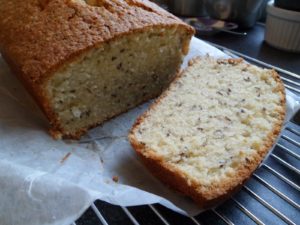-
 According to the Food Timeline, there is a great deal of symbolism in foods we eat to celebrate the turn of the year, “In most cultures, foods prepared on New Year’s Day bring good luck. Which foods? Depends upon the culture. Recurring themes are green (life), gold & coins (money/wealth) and pork/ham (because pigs root forward as they eat, embracing challenges).” On Saturday, January 25 from 11:00 – 12:30, kids can learn about a variety of ways the New Year holiday is marked around the world, including some American traditions. “The custom of paying New Year’s calls originated in New York, where the Dutch held open house on New Year’s Day and served cherry bounce, olykoeks [doughnuts] steeped in rum, cookies, and honey cakes. From New York the custom spread throughout the country.”* Museum Educator Katherine Karlik will be talking about a New Year’s Cake such as would have been served at a New Year’s Day Open House in New York City in the mid-1800’s – with plenty for everyone. The children will be baking a cake based on a historic recipe attributed to Eliza Dunne, which is in the collection of the New-York Historical Society.
According to the Food Timeline, there is a great deal of symbolism in foods we eat to celebrate the turn of the year, “In most cultures, foods prepared on New Year’s Day bring good luck. Which foods? Depends upon the culture. Recurring themes are green (life), gold & coins (money/wealth) and pork/ham (because pigs root forward as they eat, embracing challenges).” On Saturday, January 25 from 11:00 – 12:30, kids can learn about a variety of ways the New Year holiday is marked around the world, including some American traditions. “The custom of paying New Year’s calls originated in New York, where the Dutch held open house on New Year’s Day and served cherry bounce, olykoeks [doughnuts] steeped in rum, cookies, and honey cakes. From New York the custom spread throughout the country.”* Museum Educator Katherine Karlik will be talking about a New Year’s Cake such as would have been served at a New Year’s Day Open House in New York City in the mid-1800’s – with plenty for everyone. The children will be baking a cake based on a historic recipe attributed to Eliza Dunne, which is in the collection of the New-York Historical Society.
The Colonial Cookery and Customs for Kids workshop at the Wilton Historical Society teaches kids a “reciept” (recipe) used in the Connecticut region. While the food is prepared, they hear about Colonial manners, morals and way of life. The monthly workshops feature relatively simple dishes made with local, seasonal ingredients, adapted for modern kitchens. All participants will sample their own cooking and take home recipe cards – as well as any leftovers! The children will learn how a Colonial kitchen would have operated, in order to appreciate the modern conveniences we take for granted. Previous sessions have made bannock cakes, pease porridge, pickles, an amulet of green peas, apple tansey, fairy butter, pumpkin bread, cranberry shortbread, New Year’s “cakes”, New England chowder, hand pies, cheese and ramp soufflé, pea and watercress Rappahannock, blackberry maslin, thirded bread, pound cake with “Oranges” juice, maple cup custard, pepper pot soup, scalloped tomatoes, dressed macaroni and cheese, gingerbread cakes, maple syrup tart, quick pickling, Johnny cakes, and applesauce cake.
Suggested for ages 6 – 12.
Members: $10; Non-members $15. Space is limited — please register by contacting info@wiltonhistorical.org or call 203-762-7257.
*Did You Know?
“On the first New Year’s after his inauguration, George Washington opened his house to the public, and he continued to receive visitors on New Year’s Day throughout the seven years he lived in Phildadelphia. On January 1, 1791, a senator from Pennsylvania noted in his diary: “Made the President the compliments of the season; had a hearty shake of the hand. I was asked to partake of punch and cakes, but declined…Eventually, it became de rigeur [common social practice] for those who intended to receive company to list in newspapers the hours they would be “at home.” It was a disastrous practice: parties of young men took to dashing from house to house for a glass of punch, dropping in at as many of the homes listed in the papers as they could. Strangers wandered in off the streets, newspapers under their arms, for a free drink and a bit of a meal. The custom of having an open house on the first day of the year survived the assaults of the newspaper readers. The traditional cookies and cakes continued to be served, along with hot toddies, punches, eggnogs, tea, coffee, and chocolate. But public announcements of at-home hours were dropped at the end of the nineteenth century, and houses were open only to invited friends.” —American Heritage Cookbook and Illustrated History of American Eating & Drinking, American Heritage: New York] 1964